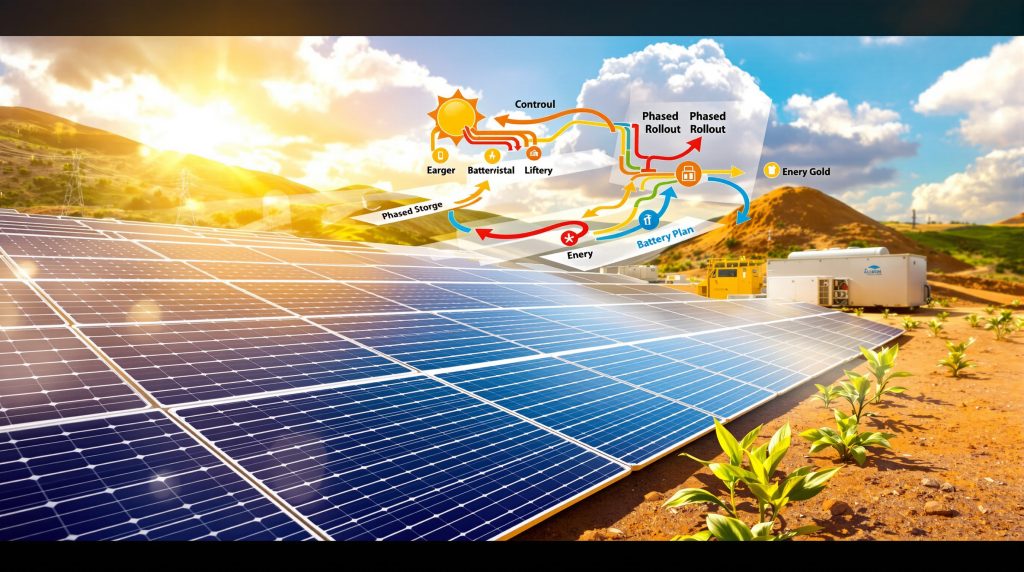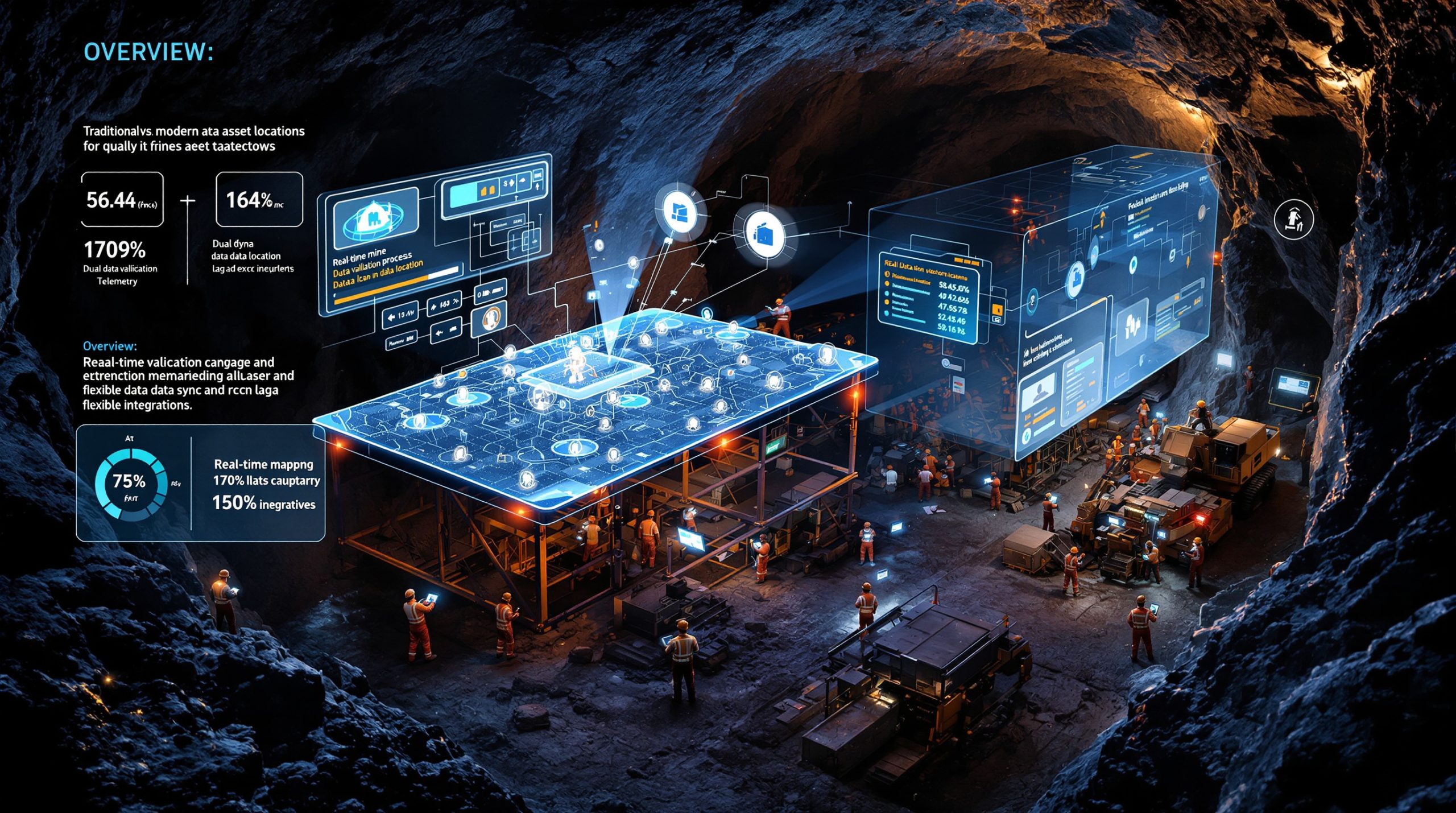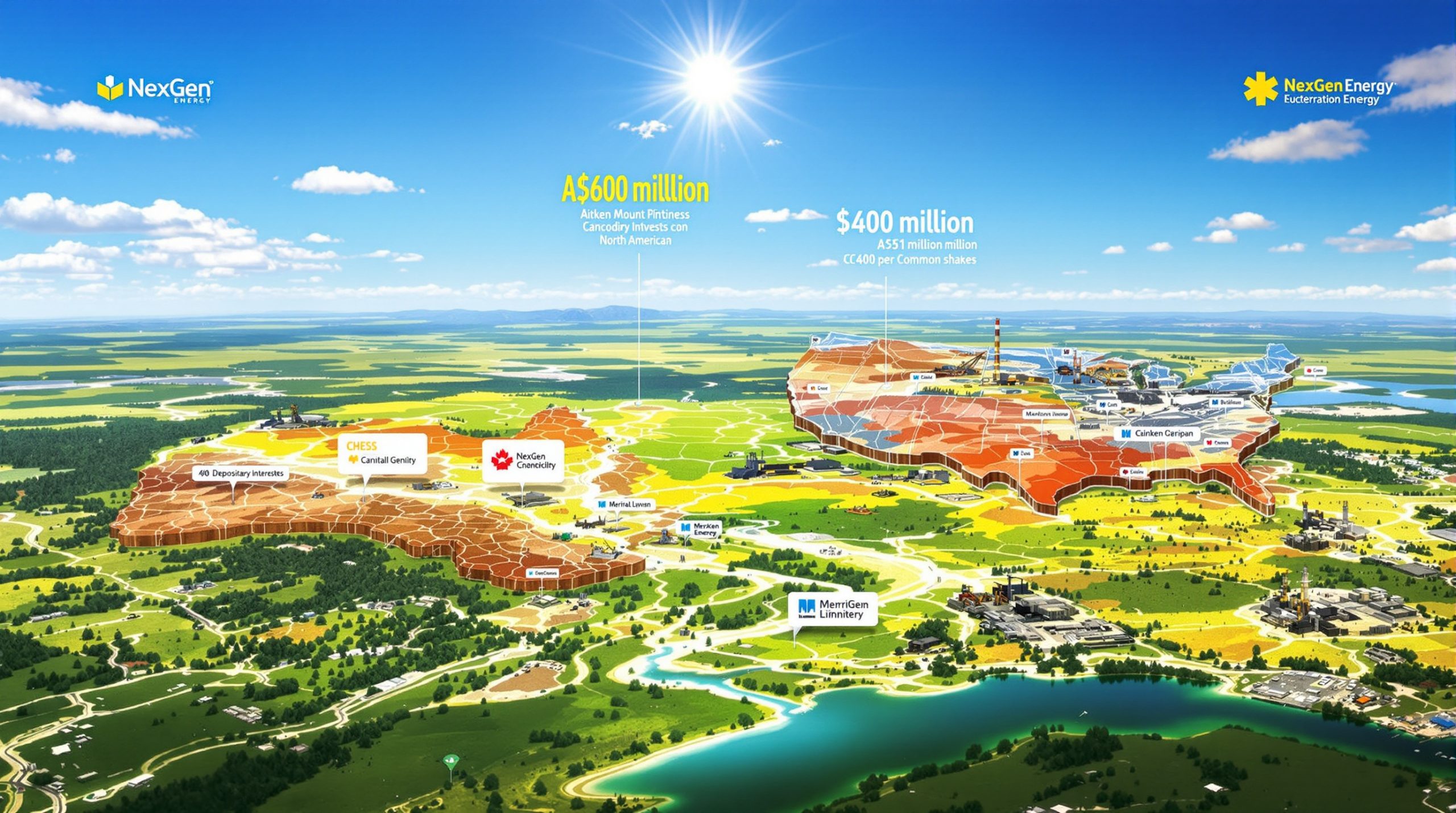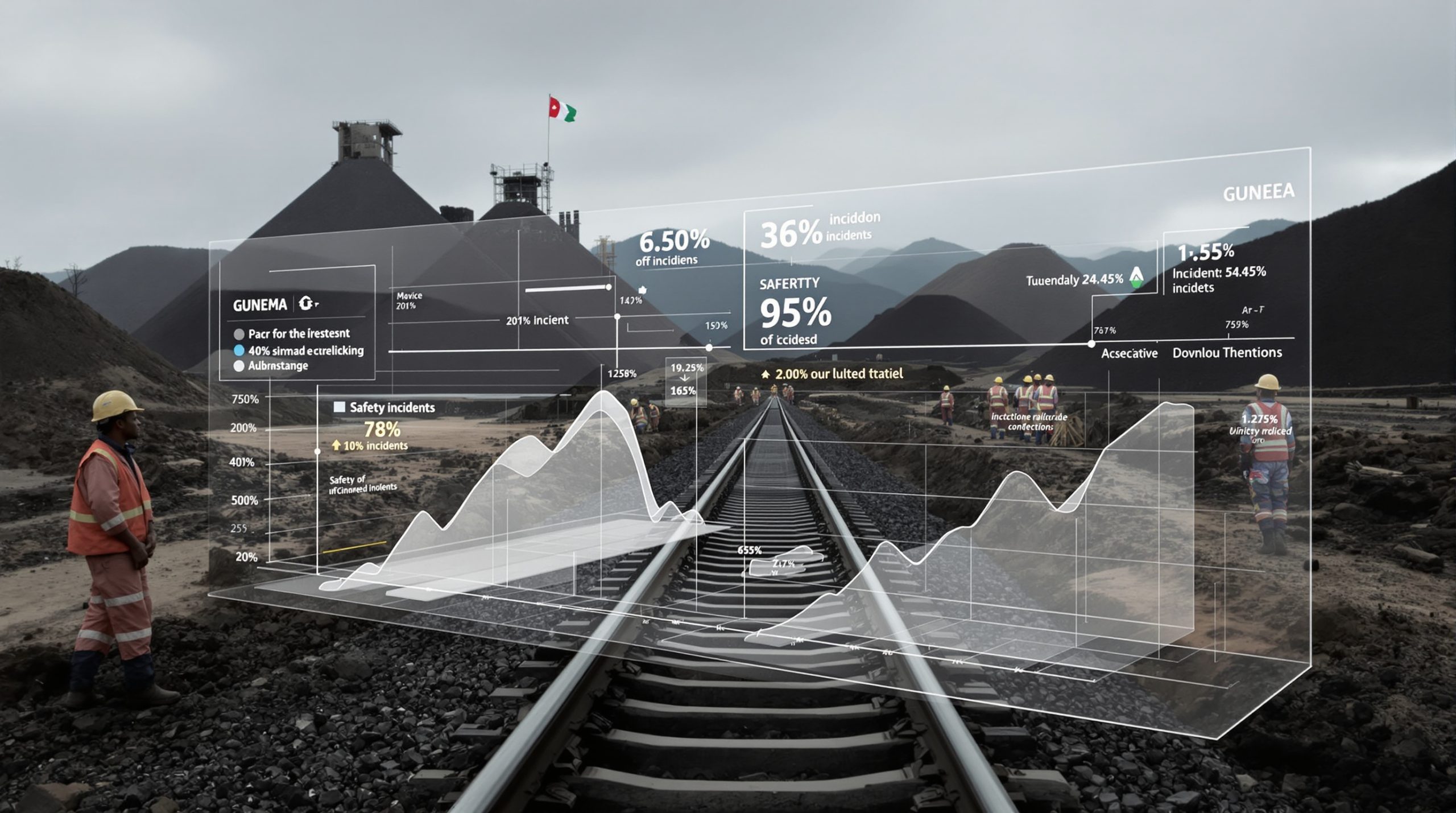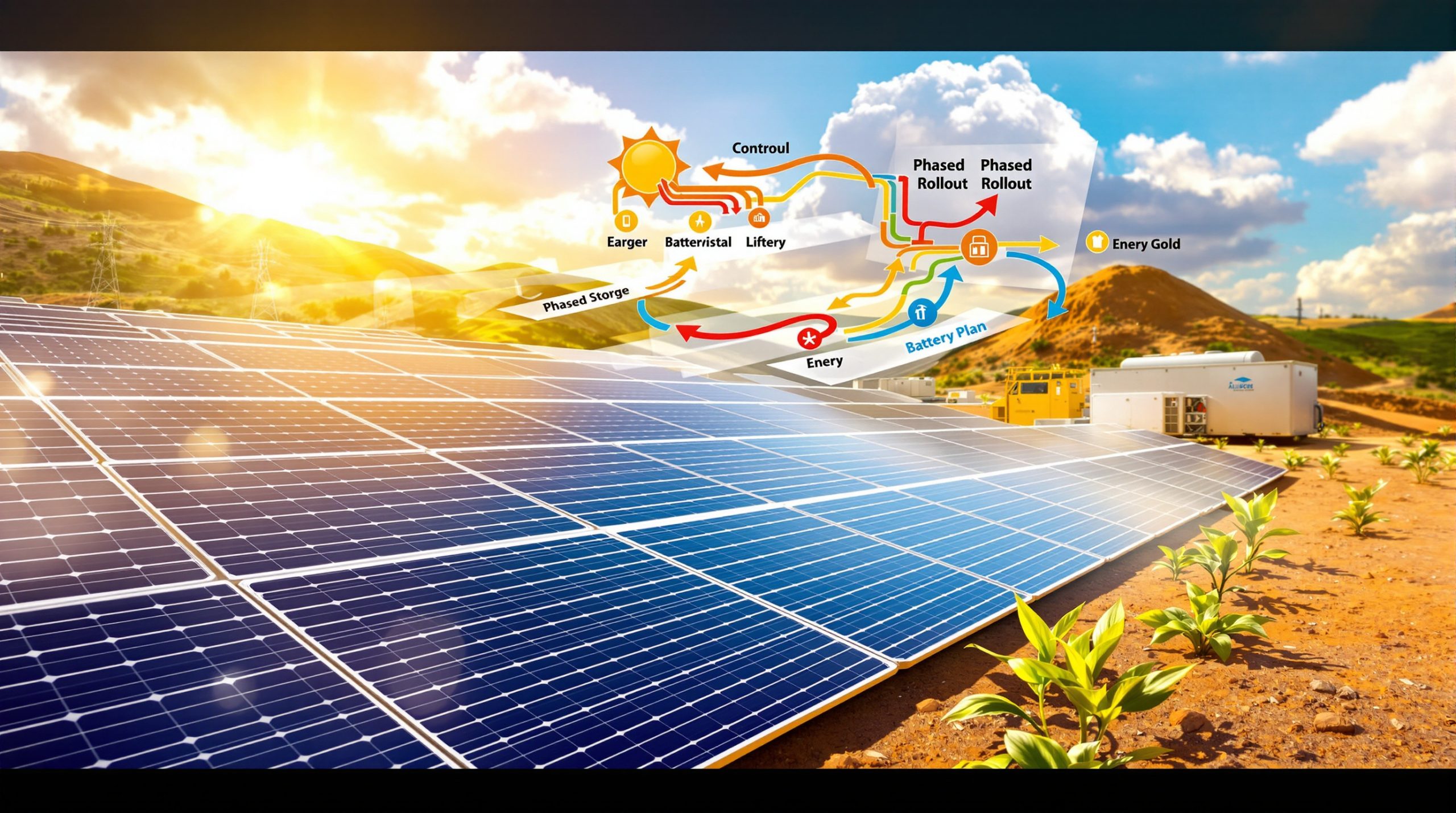Allied Gold's Innovative Energy Overhaul at Sadiola Mine: Cutting Costs While Powering Growth
Allied Gold Corporation is implementing a strategic, multi-phase energy transformation at its Sadiola gold mine that promises to revolutionize power generation while dramatically reducing costs. This comprehensive Allied Gold energy overhaul at Sadiola combines cutting-edge technologies with a pragmatic phased approach to support both current operations and future expansion plans.
What Are the Main Objectives of the Energy Revamp?
The primary goals of Allied Gold's energy transformation strategy at Sadiola are threefold: to enhance power efficiency, increase reliability, and significantly reduce operational costs. This carefully orchestrated overhaul has been designed specifically to support Sadiola's phased expansion while minimizing operational expenditure and mitigating energy-related risks.
The company recognizes that sustainable energy solutions are not just environmentally responsible but economically advantageous in the long term. By implementing this comprehensive energy strategy, Allied Gold aims to position Sadiola as a model for sustainable mining decarbonisation benefits in West Africa.
Industry analysts note that mines operating in remote locations like Sadiola often face significant challenges with energy security and cost management. This initiative directly addresses these pain points through a forward-thinking approach to power generation.
How Is the Overhaul Structured and Staged?
Allied Gold has adopted a carefully sequenced implementation strategy that maximizes flexibility while minimizing risk. This methodical approach allows for adjustments as technology evolves and as the mine's energy needs change over time.
Phase 1 focuses on the installation of advanced diesel generators equipped with sophisticated control systems. These modern generators are significantly more fuel-efficient than conventional units, providing immediate operational improvements while laying the groundwork for future energy integration.
The Transition to Hybrid phase represents a pivotal step in the transformation. During this period, Allied Gold will integrate medium-speed thermal units while simultaneously installing photovoltaic solar arrays and battery storage systems. This hybrid approach provides a balanced energy mix that optimizes reliability while beginning to reduce fossil fuel dependence.
The Staged Replacement phase involves the systematic decommissioning of older diesel units starting in early 2026. These legacy systems will be replaced with more efficient models that further reduce operational costs and environmental impact.
Mining analyst Nathan Reynolds explains: "What makes this approach notable is the careful balancing of immediate operational needs with longer-term sustainability goals. The phased implementation allows Allied Gold to spread capital expenditure while progressively reducing operational costs—a win-win strategy for the company and its stakeholders."
How Will the Overhaul Impact Energy Supply and Cost at Sadiola?
How Will the Mine's Power Demand Be Met Across Expansion Phases?
As Sadiola expands its operations, power demand will increase significantly. Allied Gold has developed a comprehensive plan to meet these growing energy requirements through a scalable approach.
Phase 1 Energy Demand requires approximately 20 MW to support the initial expansion. This represents the baseline power needed to drive the increased processing capacity at the mine.
Phase 2 Projection anticipates an increase to approximately 32 MW as operations continue to scale. This 60% increase in power demand necessitates a robust and flexible energy solution that can grow with the operation.
The Renewable Integration component involves an initial solar plant designed to supply peak capacity of approximately 35 MW, which will cover roughly 40% of Phase 1 energy demand. This significant renewable component represents a major step toward electrification & decarbonisation in mining operations.
A Battery Storage system of 30 MWh will be paired with the solar installation during the early rollout. This storage capacity is crucial for managing demand peaks and ensuring power availability during non-sunlight hours. The system is designed to be expandable to 45 MWh in later phases.
The Potential Renewable Growth plan could eventually see up to 60 MW of solar capacity and 45 MWh of battery storage in future development stages. This expanded renewable footprint would further reduce operational costs and environmental impact.
What Cost and Efficiency Gains Are Expected?
The financial benefits of this energy transformation are projected to be substantial, with staged improvements delivering increasingly significant savings:
| Energy Stage | Estimated Cost Reduction | Key Stats |
|---|---|---|
| Diesel + Initial Solar/Battery | Up to 20% | 35 MW peak, 30 MWh storage, 40% demand |
| Full Hybrid Suite | Up to 45% | 60 MW solar, 45 MWh storage, 60% future |
| All-in Sustaining Cost Reduction | $150/oz–$200/oz | Gold production cost savings |
These cost reductions are particularly significant in the context of gold mining economics, where energy typically represents 15-20% of all-in sustaining costs. The projected savings of $150-$200 per ounce could potentially transform Sadiola's profitability profile, especially in a competitive gold market.
A particularly innovative aspect of the implementation is the deferred payment structure for equipment, which minimizes upfront capital expenditure and strengthens Allied Gold's financial flexibility. This approach allows the company to begin realizing operational savings before the bulk of capital payments come due.
Industry observers note that this financial structure is increasingly common in mining industry innovation, as it aligns the interests of equipment suppliers with the mining company's success. Equipment providers have greater confidence in the reliability and performance of their systems, while mining companies can manage cash flow more effectively.
Key Insight:
The investments at Sadiola will ensure robust power for current and future mining needs while systematically cutting costs, fossil fuel dependence, and carbon emissions. The carefully staged implementation minimizes financial risk while maximizing operational benefits.
What Technologies and Partners Enable the Sadiola Energy Transformation?
Who Are Key Contributors and What Solutions Are Involved?
Allied Gold has established strategic partnerships with industry leaders to ensure successful implementation of this complex energy transformation.
African Power Services has been engaged as the primary partner to deliver the initial phase of the project. Their expertise in remote power solutions for mining operations brings valuable experience and technical capabilities to the project, as reported by IM Mining.
Advanced Control Systems represent a critical component of the overhaul. Modern modular generator management technologies will optimize fuel consumption, maintenance schedules, and overall system reliability.
The Hybrid Power Solutions combine cutting-edge thermal units, solar photovoltaic arrays, and battery energy storage systems in an integrated approach that maximizes efficiency while ensuring reliability. This integration is particularly challenging in remote mining locations and requires sophisticated engineering solutions.
The Scalability of the system is a key design principle, allowing power output to increase in line with mine expansion milestones. This flexibility prevents overinvestment in initial stages while ensuring capacity can grow as needed.
What Are the Unique Technical Features?
The modular system design represents a significant innovation in mining energy infrastructure. This approach permits incremental capacity increases that align perfectly with the mine's growing demand profile, eliminating the need for oversized initial investments.
State-of-the-art diesel generators in the initial stages provide a reliable bridge toward full hybridization. These modern units are far more efficient than traditional generators, with advanced emission controls and fuel optimization systems.
The integration of solar with battery storage creates a sophisticated energy management system capable of handling demand peaks, especially during non-sunlight hours. The control systems will automatically optimize the energy mix based on current demand, available sunlight, and battery status.
Mining technology expert Dr. Sarah Martinez comments: "The technical sophistication of this system shouldn't be underestimated. Integrating multiple energy sources in a remote mining operation requires advanced control systems and careful engineering. The modular approach reduces implementation risk while providing a clear path to increased renewable penetration."
How Does the Overhaul Align with Industry Sustainability Trends?
Allied Gold's energy transformation at Sadiola follows the global mining industry's accelerating trend toward renewable energy and hybrid power solutions. This shift is driven by both economic and environmental considerations, as renewable energy becomes increasingly cost-competitive with fossil fuels.
The project reinforces environmental, social, and governance (ESG) credentials for gold mining in West Africa, a region where responsible resource development is increasingly important to stakeholders. Investors, local communities, and regulatory authorities all recognize the value of sustainable mining practices.
The mining industry has seen a significant shift in energy transition strategies over the past decade, with renewable integration becoming mainstream rather than exceptional. Companies leading this transition, like Allied Gold, are positioning themselves advantageously for a future where carbon intensity may directly impact operational costs through carbon pricing or regulatory requirements.
What Is the Broader Impact on Mine Operations and Output?
How Will Processing Capacities and Gold Output Change?
The energy transformation at Sadiola directly supports significant operational enhancements:
Plant enhancements in Phase 1 target an increase in processing capacity to 5.7 million tonnes of ore annually. This expanded throughput capacity is a critical component of Sadiola's growth strategy.
Projected Gold Output is expected to stabilize between 200,000 and 230,000 ounces per year. This production level positions Sadiola as a significant mid-tier gold producer with substantial contribution to Allied Gold's overall portfolio.
Operational Security will be dramatically improved by the new energy infrastructure, safeguarding against power disruptions that could otherwise impact production during the expansion phase. This reliability is particularly valuable in remote locations where grid power is unavailable or unreliable.
Mining analyst Jordan Williams notes: "The production stability that comes with reliable power shouldn't be underestimated. Power interruptions can cause significant downstream processing issues beyond just the direct production loss. A stable 200,000+ ounce annual production profile makes Sadiola a cornerstone asset."
How Does This Compare with Industry Approaches?
Allied Gold's approach at Sadiola is competitive with emerging best practices in other major gold mining regions worldwide. The company's adoption of deferred capital models, modular renewables, and hybrid power is particularly noteworthy among peer mines in West Africa, according to NAI 500's analysis.
While many mining companies are exploring renewable integration, the comprehensive approach at Sadiola—combining multiple technologies with a phased implementation strategy—stands out as particularly sophisticated. The financial structuring of the project also demonstrates innovation in how mining companies can manage the transition to more sustainable operations.
Industry benchmarking suggests that mines with similar hybrid power solutions have achieved 15-25% reductions in greenhouse gas emissions alongside the cost savings. These environmental benefits contribute to improved stakeholder relations and potentially preferential treatment from ESG-focused investors.
What Case Studies or Scenarios Illustrate Potential Outcomes?
Example Scenario Table: Sadiola Power Mix Evolution
| Year | Diesel (%) | Thermal (%) | Solar (%) | Battery (%) | Estimated Cost Saving (%) |
|---|---|---|---|---|---|
| 2025 | 90 | 0 | 10 | 0 | Baseline |
| 2026 | 60 | 10 | 25 | 5 | 20 |
| 2027 | 50 | 20 | 25 | 5 | 30 |
| 2028+ | 30 | 20 | 45 | 5 | 45 |
(Figures are representative projections to illustrate staged transition and savings)
This evolution illustrates how the power mix at Sadiola will gradually shift from predominantly diesel-based to a diverse hybrid system. The progressive integration of renewable energy and more efficient thermal generation drives increasing cost savings over time.
Similar transformations at other mining operations globally have demonstrated that hybrid systems can achieve or exceed their projected benefits when properly implemented. Key success factors include careful system integration, appropriate sizing of components, and sophisticated control systems that optimize the energy mix in real-time.
Frequently Asked Questions (FAQs)
How Does Allied Gold's Sadiola Overhaul Reduce Carbon Emissions?
The shift from a diesel-dominated power system to a hybrid energy mix significantly reduces fuel consumption and associated emissions. Modern diesel generators in the initial phase offer improved efficiency compared to legacy units, while the progressive integration of solar power directly displaces fossil fuel consumption.
By 2028, the projected power mix will reduce the mine's reliance on diesel by approximately 60% compared to baseline operations. This reduction translates directly to lower greenhouse gas emissions, aligning with global mining industry efforts to reduce carbon intensity.
The battery storage component further enhances emission reductions by allowing maximum utilization of solar energy, storing excess production during peak sunlight hours for use during periods of lower solar generation.
What Are the Main Risks and How Are They Managed?
Several key risks have been identified and mitigated through careful planning:
-
Power demand forecasting risks are addressed through the modular, scalable system design, which allows capacity to adjust to actual demand without significant overinvestment.
-
Equipment delivery timeline uncertainties are managed through phased implementation, with existing systems maintained until new equipment is proven operational.
-
Weather variability impacts on solar production are mitigated through comprehensive battery storage and the maintenance of sufficient thermal generation capacity to ensure reliability regardless of solar conditions.
-
Technology integration challenges are addressed through partnerships with experienced providers and thorough testing protocols before full deployment.
The staged implementation approach itself represents a fundamental risk management strategy, allowing for learning and adjustment throughout the multi-year transformation process.
How Soon Will the Mine See Benefits from the New System?
Cost and efficiency gains will begin to materialize as soon as the first modern diesel units come online in 2026. These improvements will accelerate with the integration of solar and battery systems later that year.
The full financial and operational benefits will be realized during the final implementation stages, with the complete hybrid system expected to be operational by 2028. However, meaningful cost reductions will occur incrementally throughout the implementation period.
Production stability benefits will be immediate with each phase of implementation, as more reliable power directly translates to more consistent processing operations and gold recovery.
Conclusion: Key Outcomes and Strategic Advantages
What Differentiates Sadiola's Approach Among West African Gold Mines?
Allied Gold's approach at Sadiola stands out for several key reasons:
-
Its commitment to staged modernization allows for managed risk and capital expenditure while still achieving transformative results.
-
The focus on cost control through innovative financial structuring minimizes upfront investment while maximizing long-term benefits.
-
The comprehensive integration of multiple energy technologies creates a resilient, flexible system rather than simply adding renewable components to existing infrastructure.
These differentiators position Sadiola as a leading example of green iron production and futureproofing gold production in West Africa, a region where energy challenges have historically constrained mining operations.
Strategic Takeaway
Allied Gold's phased energy overhaul at Sadiola represents a transformative approach to mine power generation that balances immediate operational needs with long-term sustainability goals. By systematically reducing energy costs while increasing reliability, the project is expected to significantly enhance Sadiola's financial performance and operational resilience.
This forward-thinking initiative positions Allied Gold as a leader in responsible gold mining, demonstrating how innovative energy solutions can deliver both economic and environmental benefits in challenging operational environments. As the gold mining industry continues to evolve toward more sustainable practices, Sadiola's transformation provides a valuable case study in successful energy transition.
Are You Prepared for the Next Big Discovery?
Discover how Discovery Alert's proprietary Discovery IQ model can transform your investing strategy with real-time alerts on significant ASX mineral discoveries. Explore historic returns on major discoveries by visiting the Discoveries page and start your exclusive 30-day free trial today to gain a market-leading edge.
